 W
WThe Afghan Museum was private museum of culture and cultural history of Afghanistan, situated in the historic and picturesque Speicherstadt of Hamburg, Germany. The museum's mandate was to bring the authentic and traditional aspects of Afghan culture to life.
 W
WThe Allied Museum is a museum in Berlin. It documents the political history and the military commitments and roles of the Western Allies in Germany – particularly Berlin – between 1945 and 1994 and their contribution to liberty in Berlin during the Cold War era.
 W
WThe Altes Museum is a listed building on the Museum Island in the historic centre of Berlin and part of the UNESCO World Heritage. Built from 1825 to 1830 by order of King Frederick William III of Prussia according to plans by Karl Friedrich Schinkel, it is considered as a major work of German Neoclassical architecture. It is surrounded by the Berlin Cathedral to the east, the Berlin Palace to the south and the Zeughaus to the west. Currently, the Altes Museum is home to the Antikensammlung and parts of the Münzkabinett.
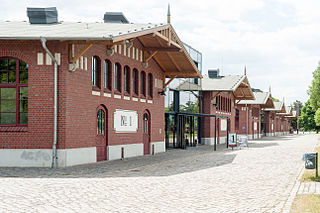 W
WBallinStadt is the name given to a memorial park and former emigration station in the Port of Hamburg, Germany.
 W
WThe Barnim Panorama, owned by the municipality Wandlitz, was created in September 2013 by combining the Agrarmuseum Wandlitz and the visitor center of the Barnim Nature Park. It has the largest agricultural collection in Brandenburg and offers six themed rooms to give visitors an insight into the 200-year-old history of agriculture in Brandenburg. The museum in the quarter Wandlitz was built in 1955 and could only use provisional arrangements until 2013. Because of the growing demand for more exhibition space and better opportunities to present its collection, the quarter decided to construct a new building across the street from the original museum.
 W
WThe New Church, is located in Berlin on the Gendarmenmarkt across from French Church of Friedrichstadt. Its parish comprised the northern part of the then new quarter of Friedrichstadt, which until then belonged to the parish of the congregations of Jerusalem's Church. The Lutheran and Calvinist congregants used German as their native language, as opposed to the French-speaking Calvinist congregation of the adjacent French Church of Friedrichstadt. The congregants' native language combined with the domed tower earned the church its colloquial name Deutscher Dom. While the church physically resembles a cathedral, it is not a cathedral in the formal sense of the word, as it was never the seat of a bishop.
 W
WThe St. Nikolai-Kirche, is the oldest church in Berlin, the capital of Germany. The church is located in the eastern part of central Berlin, the borough of Mitte. The area around the church, bounded by Spandauer Straße, Rathausstraße, the River Spree and Mühlendamm, is known as the Nikolaiviertel 'Nicholas quarter', and is an area of restored medieval buildings. The church was built between 1220 and 1230, and is thus, along with the Church of Our Lady at Alexanderplatz not far away, the oldest church in Berlin.
 W
WThe Berlin-Hohenschönhausen Memorial is a museum and memorial located in Berlin's north-eastern Lichtenberg district in the locality of Alt-Hohenschönhausen, part of the former borough of Hohenschönhausen. It was opened in 1994 on the site of the main political prison of the former East German Communist Ministry of State Security, the Stasi.
 W
WThe Bode-Museum, formerly called the Kaiser-Friedrich-Museum, is a listed building on the Museum Island in the historic centre of Berlin and part of the UNESCO World Heritage. It was built from 1898 to 1904 by order of German Emperor William II according to plans by Ernst von Ihne in Baroque Revival style. The building's front square featured a memorial to German Emperor Frederick III, which was destroyed by the East German authorities. Currently, the Bode-Museum is home to the Skulpturensammlung, the Museum für Byzantinische Kunst and the Münzkabinett.
 W
WThe Borderland Museum Eichsfeld is a history museum located in Central Germany at the former inner-German border between East and West Germany. It deals with the Cold War in general and the German division in specific.
 W
WBraunschweigisches Landesmuseum (BLM) is a history museum in Braunschweig, Germany, operated by the state of Lower Saxony. The museum is scattered on four locations: Vieweghaus, Hinter Ägidien, Kanzlei (Wolfenbüttel) and Bauernhausmuseum (Bortfeld).
 W
WCecilienhof Palace is a palace in Potsdam, Brandenburg, Germany built from 1914 to 1917 in the layout of an English Tudor manor house. Cecilienhof was the last palace built by the House of Hohenzollern that ruled the Kingdom of Prussia and the German Empire until the end of World War I. It is famous for having been the location of the Potsdam Conference in 1945, in which the leaders of the Soviet Union, the United Kingdom and the United States made important decisions affecting the shape of post World War II Europe and Asia. Cecilienhof has been part of the Palaces and Parks of Potsdam and Berlin UNESCO World Heritage Site since 1990.
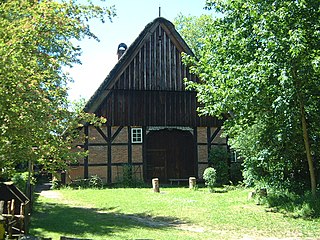 W
WDat ole Hus is a privately run local history museum in the village of Bünzen in the municipality of Aukrug in Schleswig-Holstein. Its interior rooms portray the living quarters of a farmer from this region from the 18th to the early 20th century.
 W
WThe German Historical Museum, known by the acronym DHM, is a museum in Berlin, Germany devoted to German history. It describes itself as a place of "enlightenment and understanding of the shared history of Germans and Europeans". It is often viewed as one of the most important museums in Berlin and is one of the most frequented. The museum is located in the Zeughaus (armoury) on the Unter den Linden as well as in the adjacent Exhibition Hall designed by I. M. Pei.
 W
WThe Documentation Center Nazi Party Rallying Grounds is a museum in Nuremberg. It is in the north wing of the unfinished remains of the Congress Hall of the former Nazi party rallies. Its permanent exhibition "Fascination and Terror" is concerned with the causes, connections, and consequences of Nazi Germany. Topics that have a direct reference to Nuremberg are especially taken into account. Attached to the museum is an education forum.
 W
WThe Dresden Armoury or Dresden Armory, also known as the Dresden Historical Museum, is one of the world's largest collections of ceremonial weapons, armour and historical textiles. It is part of the Dresden State Art Collections and is located in Dresden Castle in Dresden.
 W
WThe Fichtelgebirge Museum is a regional museum in Wunsiedel, formerly the 'capital' of the Sechsämterland and the county town (Kreisstadt) in the Fichtelgebirge mountains of central Germany.
 W
WThe Jewish Museum Frankfurt am Main is the oldest independent Jewish Museum in Germany. It was opened by Federal Chancellor Helmut Kohl on 9 November 1988, the 50th anniversary of Kristallnacht.
 W
WThe FHXB Friedrichshain-Kreuzberg Museum is a local history museum focusing on the borough of Friedrichshain-Kreuzberg in Berlin, Germany. It contains a historical archive related to both parts of the district, permanent exhibits on urban development and social and immigration history, temporary exhibits on the district's past and present, and a historic printing press. The museum is part of the Culture and History Department within the district administration of Friedrichshain-Kreuzberg, and is located at Adalbertstrasse 95a in Kreuzberg.
 W
WThe Fuggerei is the world's oldest social housing complex still in use. It is a walled enclave within the city of Augsburg, Bavaria. It takes its name from the Fugger family and was founded in 1516 by Jakob Fugger the Younger as a place where the needy citizens of Augsburg could be housed. By 1523, 52 houses had been built, and in the coming years the area expanded with various streets, small squares and a church. The gates were locked at night, so the Fuggerei was, in its own right, very similar to a small independent medieval town. It is still inhabited today, affording it the status of being the oldest social housing project in the world.
 W
WThe German Emigration Center is a museum located in Bremerhaven, Germany dedicated to the history of German emigration, especially to the United States. It is Europe's largest theme museum about emigration. Visitors can experience the emigration process through interactive exhibits. The museum also provides access to databases of immigration records.
 W
WThe Gutenberg Museum is one of the oldest museums of printing in the world, located opposite the cathedral in the old part of Mainz, Germany. It is named after Johannes Gutenberg, the inventor of printing from movable metal type in Western Europe. The collections include printing equipment and examples of printed materials from many cultures.
 W
WThe Hagen Westphalian Open-Air Museum is a museum at Hagen in the southeastern Ruhr area, North Rhine-Westphalia, Germany.
 W
WThe Haus der Bayerischen Geschichte: Museum is A history museum about the history of Bavaria in Regensburg. It is part of Haus der Bayerischen Geschichte (Munich) which is financed by the state government.
 W
WHaus der Geschichte is a museum of contemporary history in Bonn, Germany. With around one million visitors every year, it is one of the most popular German museums. The Haus der Geschichte is, as well as the "Zeitgeschichtliches Forum Leipzig", the "Tränenpalast" am Bahnhof Friedrichstraße and the "Museum in the Kulturbrauerei" part of the Haus der Geschichte der Bundesrepublik Deutschland Foundation. The foundation's place of business is Bonn.
 W
WThe Hedeby Viking Museum is a museum near the site of Hedeby, a former medieval city in Schleswig-Holstein, Germany focusing on the Viking Age history of the region. While the region is now in modern Germany, it was once the oldest city in Denmark until it was ceded in 1864. The museum features reconstructions of various Viking Age dwellings, ships, and houses numerous artifacts discovered during the ongoing archaeological research of the area.
 W
WThe Historical Museum of the Palatinate is a museum in the city of Speyer in the Palatinate region of the German state of Rhineland-Palatinate. It is situated across the square from the Speyer Cathedral. The museum's focus is on the History of the Palatinate; it has a collection of about 1 million artifacts, the oldest being an approximately 190,000-year-old hand axe. The museum is among the most important in Germany, and is known for its special exhibitions. With over 200,000 visitors per year it is one of the major attractions of Speyer.
 W
WThe Imperial Palace of Goslar is a historical building complex at the foot of the Rammelsberg hill in the south of the town of Goslar north of the Harz mountains, central Germany. It covers an area of about 340 by 180 metres. The palace grounds originally included the Kaiserhaus, the old collegiate church of St. Simon and St. Jude, the palace chapel of St. Ulrich and the Church of Our Lady (Liebfrauenkirche). The Kaiserhaus, which has been extensively restored in the late 19th century, was a favourite imperial residence, especially for the Salian emperors. As early as the 11th century, the buildings of the imperial palace had already so impressed the chronicler Lambert of Hersfeld that he described it as the "most famous residence in the empire". Since 1992, the palace site, together with the Goslar's Old Town and the Rammelsberg has been a UNESCO world heritage site.
 W
WThe Imperial Palace Ingelheim is an important Imperial Palace erected in the second half of the 8th century in Germany. It served Emperors and Kings as a residence and place for governance until the 11th century. The palatinate complex is located in the cadastral area of Nieder-Ingelheim, 15 km west of Mainz, in district "Im Saal". It is location at a slope with a view of the Rhine plains. Impressive remains of the buildings of the palace have been preserved above ground to this day. The greater part of the complex is located foundation under ground and archaeological excavations have been able to reconstruct the entire system of buildings.
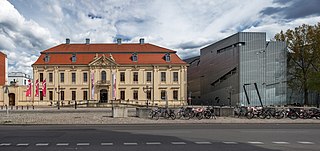 W
WThe Jewish Museum Berlin was opened in 2001 and is the largest Jewish museum in Europe. It consists of three buildings, two of which are new additions specifically built for the museum by architect Daniel Libeskind. German-Jewish history is documented in the collections, the library and the archive, and is reflected in the museum's program of events. The museum is one of Germany's most frequented museums . Opposite the building ensemble, the W. Michael Blumenthal Academy of the Jewish Museum Berlin was built – also after a design by Libeskind – in 2011/2012 in the former flower market hall. The archives, library, museum education department, a lecture hall and the Diaspora Garden can all be found in the academy.
 W
WKarlsruhe Palace was erected in 1715 by Margrave Charles III William of Baden-Durlach, after a dispute with the citizens of his previous capital, Durlach. The city of Karlsruhe has since grown around it. It is now home to the main museum of the Badisches Landesmuseum Karlsruhe.
 W
WKnipex is a German manufacturer of pliers for professional use. The headquarters are located in Wuppertal-Cronenberg. For four generations, Knipex has been an independent, owner-managed family company.
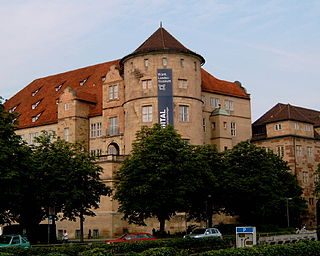 W
WThe Landesmuseum Württemberg is the main historical museum of the Württemberg part of the German state of Baden-Württemberg. It emerged from the 16th-century “Kunstkammer” of the dukes, later kings, of Württemberg who resided in Stuttgart. As a museum it was founded in 1862 by King William I.
 W
WThe Märkisches Museum is a museum in Mitte, Berlin. Founded in 1874 as the museum of the city of Berlin and its political region, the March of Brandenburg, it occupies a building on the northern edge of Köllnischer Park, facing the Spree, which was designed by Ludwig Hoffmann and completed in 1908. It is now the main facility of the Stiftung Stadtmuseum Berlin, Landesmuseum für Kultur und Geschichte Berlins, the City of Berlin museum foundation, which also operates four other sites.
 W
WThe Museum in the Kulturbrauerei is a museum of contemporary German history. The permanent exhibition focuses on everyday life in the German Democratic Republic. It is located in the Kulturbrauerei building complex in Prenzlauer Berg district in Berlin, Germany.
 W
WThe Museum Ulm, founded in 1924, is a museum for art, archeology, urban and cultural history in Ulm, Germany.
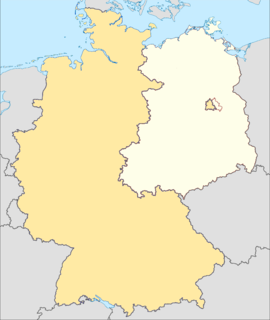 W
WNumerous museums of the inner German border are located along the course of the former border between East and West Germany, documenting its story and in some places preserving original elements of the border fortifications.
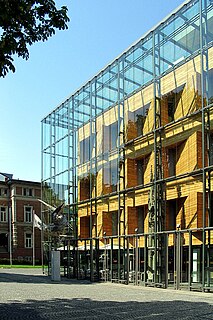 W
WThe Rheinisches Landesmuseum Bonn, or LVR-LandesMuseum Bonn, is a museum in Bonn, Germany, run by the Rhineland Landscape Association. It is one of the oldest museums in the country. In 2003 it completed an extensive renovation. The museum has a number of notable ancient busts and figures dating back to Roman times.
 W
WThe Rheinische Landesmuseum Trier is an archaeological museum in Trier, Germany. The collection stretches from prehistory through the Roman period, the Middle Ages to the Baroque era with a strong emphasis on the Roman past of Augusta Treverorum, Germany's oldest city. Its collections of (local) Roman sculptures, Roman mosaics and frescos are among the best in Germany.
 W
WThe Spandau Citadel is a fortress in Berlin, Germany, one of the best-preserved Renaissance military structures of Europe. Built from 1559–94 atop a medieval fort on an island near the meeting of the Havel and the Spree, it was designed to protect the town of Spandau, which is now part of Berlin. In recent years it has been used as a museum and has become a popular tourist spot. Furthermore, the inner courtyard of the Citadel has served as an open air concert venue in the summertime since 2005..
 W
WThe State Museum for Art and Cultural History is an art museum consisting of three separate buildings located close to each other in the city of Oldenburg, Lower Saxony, Germany.
 W
WThe Villa ten Hompel is a memorial site for offenses committed by the police and government administration during the National Socialist period in the city of Münster, located in the German state of North Rhine-Westphalia.
 W
WVischering Castle in Lüdinghausen, North Rhine-Westphalia is the most typical moated castle in the Münster (region) of Germany. This region has one of the highest German concentrations of castles, palaces and fortifications, Lüdinghausen having three by itself. The castle consists of outer defensive courtyard, defensive gateways, moat, drawbridge, main building and chapel. The sandstone walls, the red tile roofs as well as their reflection in the moat provide many harmonious views from the wooded surroundings.
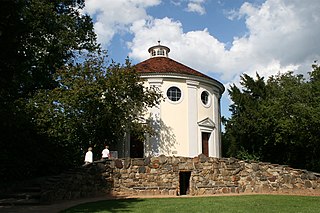 W
WThe Wörlitz Synagogue is a synagogue built in 1790 by order of Duke Leopold III of Anhalt-Dessau. It is located within the Dessau-Wörlitz Garden Realm, a UNESCO World Heritage Site since 2000.
 W
WThe Zeitgeschichtliches Forum Leipzig is a museum of contemporary German history. The museum was opened in 1999 and focuses on the history of the German division, everyday life in the communist dictatorship of the GDR, and the reunification process. It is located in the city center of Leipzig, Germany.
 W
WThe Zeughaus is a listed building and the oldest structure on Unter den Linden boulevard in the historic centre of Berlin. Erected from 1695 to 1706 according to plans by Johann Arnold Nering, Martin Grünberg, Andreas Schlüter and Jean de Bodt in Baroque style, it was later converted into a Prussian Hall of Fame. Damaged during the Allied bombing in World War II, the Zeughaus was rebuilt from 1949 to 1967 as part of the Forum Fridericianum. Since 2003, it has been home to the Deutsches Historisches Museum.
 W
WThe Zinnfigurenklause is a private museum in Freiburg im Breisgau that depicts the history of the Schwabentor in south-eastern Germany.